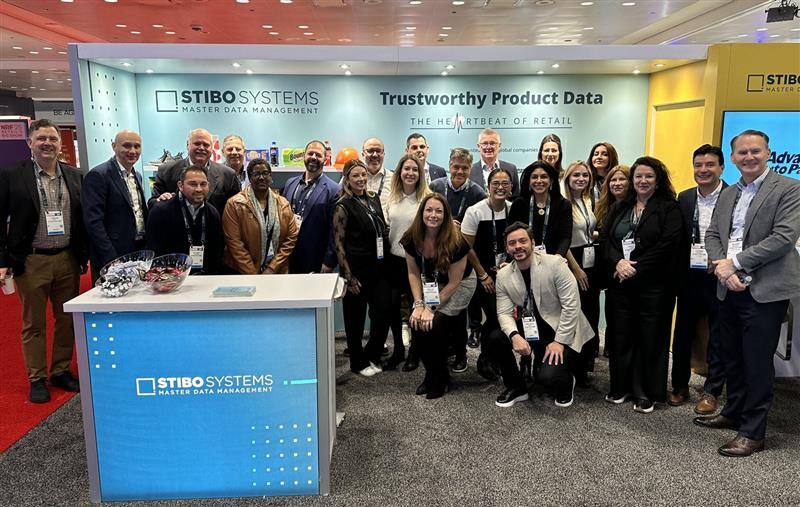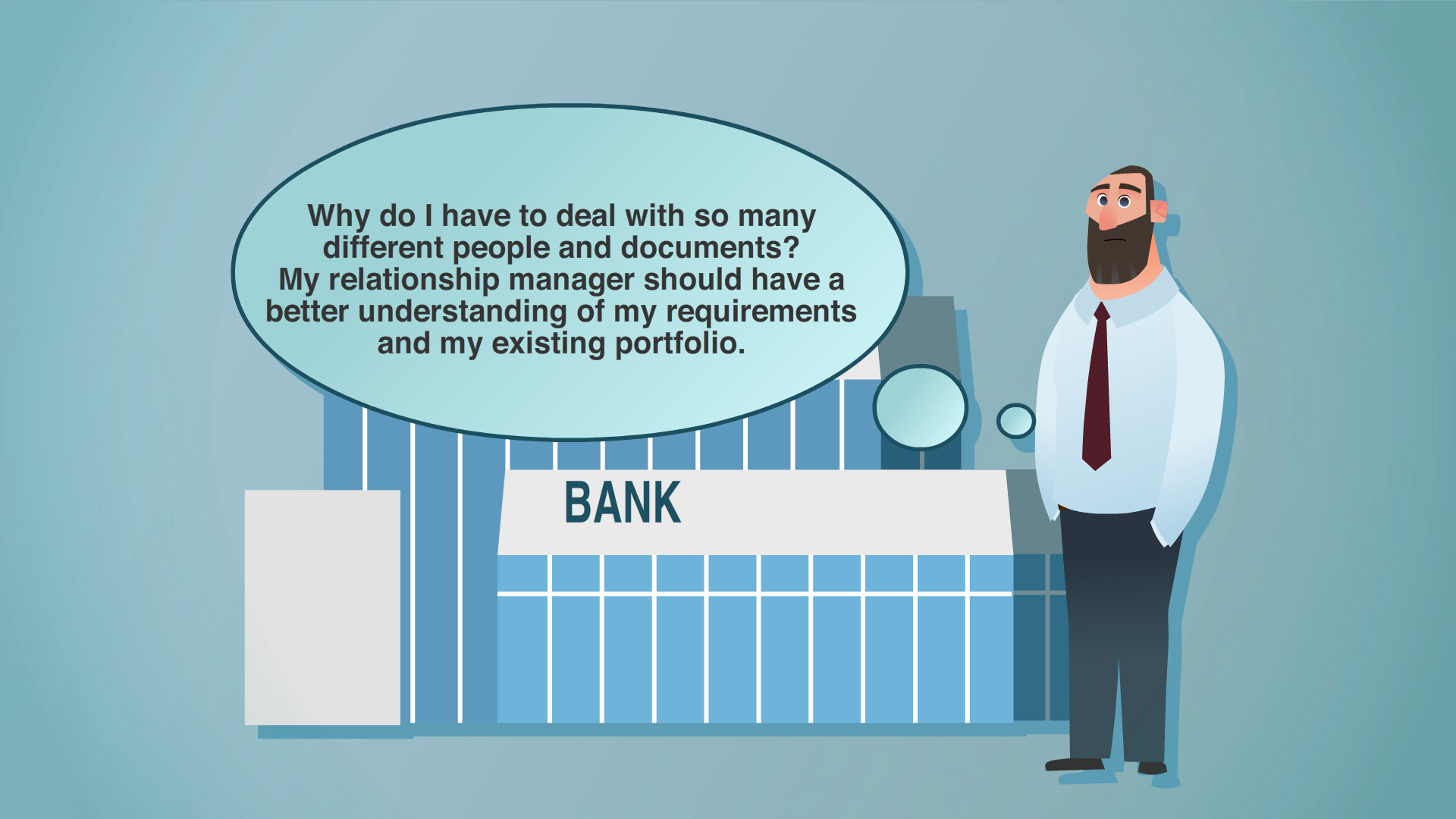The invisible price tag of poor data
Retailers often focus on visible costs like inventory management, logistics, staffing, and marketing.
Yet, hidden beneath the surface lies a silent but powerful drain on revenue and customer satisfaction: bad customer data. Inaccurate, incomplete, or outdated data can lead to costly inefficiencies, lost revenue opportunities, and, worst of all, broken customer trust.
The consequences are not always immediately visible, but they add up significantly over time.
If a customer receives a birthday promotion for the wrong product category or has a package delivered to an old address, they are unlikely to stay loyal for long.
This can seriously harm your brand's reputation, which is ultimately much more difficult to fix — especially in the retail industry.
Retail businesses that lean on data-driven decision-making are positioned for the most success, so don’t overlook data quality issues. Let’s explore the hidden costs of bad retail customer data and give you the answers to overcoming them.
The true costs of bad customer data
The impact of bad customer data in retail isn’t always obvious at first, but over time it can hurt customer relationships, slow down operations, and cut into profits.
These challenges include:
Decreased customer retention
Customer retention is the lifeblood of retail. Acquiring new customers is significantly more expensive than keeping existing ones. (“10 Key Business Development Strategies (with Examples) - Intellspot”) Bad customer data leads to frustrating experiences that erode trust.
Whether it’s a poorly personalized marketing email, a delivery sent to the wrong address, or incorrect billing details, these lapses damage the relationship between the customer and the brand.
- Example: A customer who signed up for a loyalty program in-store may receive irrelevant product recommendations online due to an incomplete or duplicated profile. This disconnect can lead the customer to feel undervalued and turn to competitors who offer more seamless experiences.
- Stat:28% of companies experience customer service issues due to bad data, and 21% report reputational damage as a result.
Operational inefficiencies
Bad data doesn’t just affect customer-facing operations; it wreaks havoc internally. When customer data is inaccurate or incomplete, employees spend valuable time manually correcting errors, reconciling conflicting information, and validating records.
This diverts resources away from strategic initiatives and slows down workflows.
- Example: Customer service agents may need to resolve duplicate profiles, delaying resolutions and frustrating customers further. Marketing teams may spend hours cleaning lists before launching a campaign, reducing productivity. Inventory teams may miscalculate demand due to inaccurate customer data, leading to stockouts or overstocking.
- Stat: Gartner estimates that poor data quality costs organizations an average of $15 million annually.
Lost revenue opportunities
Inaccurate customer data undermines personalization and targeting, leading to missed upselling and cross-selling opportunities.
Faulty data means your promotions and recommendations may not reach the right audience or may promote the wrong products. This reduces marketing ROI and leaves potential revenue untapped.
- Example: If a retailer's database shows an incorrect purchase history for a high-value customer, the recommendation engine might suggest irrelevant products. This can lead to lost sales and a dissatisfied customer. Retailers who miss these opportunities due to bad data risk losing their competitive edge.
- Stat: Businesses lose an average of $9.7 million annually due to poor-quality data.
Reputation damage
Your brand reputation can suffer when bad data results in inconsistent or irrelevant customer interactions.
Customers expect brands to "know them" and deliver personalized experiences. A misstep, such as sending a promotion for baby products to someone without children, can be more than just a mistake; it can be perceived as a sign that the brand doesn’t care.
- Example: A retailer’s marketing campaign sends personalized offers based on incorrect demographic data. Customers receive promotions that are completely irrelevant, making the brand seem out-of-touch and insensitive. Over time, these mistakes damage trust and reduce customer loyalty.
- Stat: Poor data quality strips $3.1 trillion from the U.S. economy annually.
Why do these problems persist
Bad data isn’t just a glitch — it’s a symptom of bigger issues in how information is managed and connected. These roadblocks can disrupt operations and make fixing data problems a constant struggle.
Here’s what’s behind it:
Siloed data systems
One of the primary causes of bad customer data is the existence of data silos. Retailers often use multiple systems to manage various aspects of their operations, such as CRM (Customer Relationship Management), loyalty programs, e-commerce platforms, and POS (Point of Sale) systems.
These systems typically don’t communicate with each other effectively.
- Impact: When customer data is fragmented across different systems, it results in duplicate, inconsistent, or outdated information. For instance, a customer might update their email address in the loyalty app, but this change isn’t reflected in the CRM system used by customer service. This lack of synchronization leads to errors that frustrate customers.
- Solution: Integrating these systems through a Master Data Management (MDM) platform to help create a unified view of each customer. This ensures that any update made in one system automatically propagates to all other systems. By centralizing all data into one place, you can reduce errors and support more consistent, accurate customer interactions.
Lack of governance
When there’s no clear data governance policy, it’s hard to keep data consistent and ensure accountability.
Different departments might define or manage data in their own ways, which leads to conflicting definitions and practices.
- Impact: Inconsistent data leads to mixed insights. For example, the marketing team might define a “loyal customer” differently than the sales team, causing strategies to clash and decision-making processes to suffer. This can also make daily operations less efficient.
- Solution: Create a simple framework to guide how data is handled, with clear roles and processes. Assign someone, like a data steward, to keep data accurate and consistent. Clear policies help all departments work from the same data standards.
Over-reliance on manual processes
Relying on manual data entry and updates increases the risk of errors like typos, formatting mistakes, or omissions. The more human intervention, the higher the chance for mistakes.
- Impact: Errors can spread through the system, leading to wasted time and resources. For instance, a typo in a customer’s shipping address can result in costly failed deliveries and customer complaints.
- Solution: Automate data processes with tools for validation, cleansing, and enrichment to reduce errors. AI-driven solutions can spot anomalies and suggest fixes in real-time. Automation improves data quality and frees employees to focus on higher-value tasks.
Avoiding the pitfalls: Actionable tips for retailers
Fixing bad data might seem overwhelming, but with the right strategies, retailers can turn it into an opportunity for growth.
Here are practical steps retailers can take to improve data quality and unlock its full potential:
Invest in a single source of truth
A centralized data repository keeps customer information consistent across all platforms.
This unified view of customer data allows for seamless interactions and personalized experiences.
- How to Implement:
- Deploy a Master Data Management (MDM) platform to integrate all customer data sources.
- Use data deduplication tools to merge duplicate profiles and maintain clean records.
- Ensure that updates made in one channel (e.g., online store) automatically reflect in other channels (e.g., in-store POS).
Adopt governance policies
Creating and enforcing data governance policies is essential for maintaining long-term data quality.
- How to Implement:
- Define roles for data stewards and establish clear ownership of data assets.
- Create standard operating procedures (SOPs) for data collection, validation, and updates.
- Train employees on the importance of data quality and their role in maintaining it. (“Data Quality: The Hidden Cornerstone of Digital Transformation Success”)
Leverage automation
Automation tools reduce the need for manual data entry, minimizing errors and saving time.
- How to Implement:
- Use automated data-cleansing tools to identify and correct errors in real time.
- Implement AI-driven enrichment tools to fill in missing data points and improve profile completeness.
- Leverage predictive analytics to identify trends and optimize personalization efforts.
Continuously monitor data health
Maintaining high-quality data requires ongoing attention and regular monitoring.
- How to Implement:
- Schedule regular data audits to identify and resolve inaccuracies.
- Use dashboards and automated alerts to flag data quality issues.
- Encourage customers to update their information through periodic feedback requests and incentives.
Case study: Fashion retailer
Real-world use cases show just how impactful better data management can be.
This case study highlights how one fashion retailer overcame significant challenges with customer data and achieved impressive results by implementing the right solutions:
- Background: A mid-sized fashion retailer struggled with siloed customer data. They used separate systems for in-store sales, e-commerce, and loyalty programs, resulting in inconsistent customer profiles.
- Challenges: 30% of profiles were found to be duplicate profiles, leading to confused marketing campaigns. Delivery errors due to outdated addresses increased by 15%. Frustrated customers abandoned carts after receiving irrelevant promotions.
- Solution: The retailer implemented a Stibo Systems Customer MDM solution to consolidate data, automate cleansing, and enforce governance policies, making data analysis significantly more effective.
- Results: Customer retention increased by 20%. Delivery errors dropped by 90%. Marketing conversion rates rose by 25%.
The bottom line: Data as a competitive advantage
Data is the foundation of customer loyalty and business growth. With accurate, well-managed customer data, retailers can deliver better experiences, strengthen customer relationships, and uncover new opportunities in the hyper-competitive retail landscape. Here’s how data helps you adapt, innovate, and excel:
Data as a growth accelerator
When customer data is accurate, complete, and unified, retailers gain a clearer understanding of their customers’ needs, behaviors, and preferences.
This empowers them to deliver more targeted and personalized marketing campaigns that drive higher conversion rates and increase customer lifetime value.
Accurate data allows for:
- Personalized recommendations: By understanding customers' past purchases, browsing behavior, and demographics, retailers can make product suggestions that resonate, increasing the likelihood of upselling and cross-selling.
- Example: If a customer frequently purchases athletic wear, personalized recommendations for new arrivals in workout gear or related products like sneakers or fitness accessories can create an engaging customer journey that drives additional sales.
- Optimized inventory management: High-quality data ensures demand forecasting is accurate, helping retailers stock the right products in the right quantities. This minimizes stockouts and overstock situations, improving and enhancing profitability.
- Example: Knowing that a customer segment prefers eco-friendly products can help retailers ensure their inventory levels are accurate, shelves and e-commerce stores are stocked with sustainable options that meet this demand.
- Enhanced customer acquisition strategies: Data-driven insights allow retailers to identify high-value customer segments and target them with precision. This reduces customer acquisition costs and improves marketing ROI.
- Example: Consumer behavior shows a high-value segment of customers frequently searches for sustainable fashion. Retailers can use this data to create tailored social media ads and email campaigns featuring eco-friendly collections, attracting these customers while reducing acquisition costs.
Driving customer loyalty and retention
Trustworthy data enables retailers to provide seamless, personalized experiences that build customer loyalty.
In an age where customers expect brands to understand them on an individual level, delivering consistent and meaningful interactions is crucial for retaining their business.
- Consistent omnichannel experiences: Unified customer data allows retailers to provide a seamless experience whether a customer shops online, in-store, or through a mobile app. Personalization should feel consistent across all channels.
- Example: A customer who browses for winter boots on an app should receive a tailored follow-up email with related products and an in-store promotion available at their nearest location.
- Proactive customer service: Accurate customer data helps support teams anticipate issues and resolve them quickly. Understanding a customer's history, preferences, and past complaints enables more personalized and efficient problem-solving.
- Example: If a customer has a history of delayed deliveries, a proactive communication strategy can ensure they are updated on delivery progress, demonstrating a retailer’s attentiveness and care.
- Loyalty program effectiveness: Well-managed customer behavior data ensures loyalty programs are personalized and rewarding, encouraging repeat purchases. Knowing a customer’s buying habits allows retailers to offer relevant incentives and rewards.
- Example: Offering double loyalty points for categories that a customer frequently purchases can motivate additional spending.
Fueling innovation and agility
Retailers that treat data as a strategic asset can harness its power to innovate and adapt quickly.
In a rapidly changing market, the ability to use data for predictive insights, trend analysis, and new business models can make the difference between thriving and merely surviving.
- Data-driven decision-making: High-quality data supports better decision-making across all levels of the organization. Whether launching new products, entering new markets, or optimizing operations, data-driven insights reduce risks and improve outcomes.
- Example: Analyzing customer data may reveal a growing interest in sustainable products, prompting a retailer to launch a new line of eco-friendly goods ahead of competitors.
- Agile marketing strategies: Accurate data allows for real-time analysis of campaign performance, enabling marketers to pivot strategies quickly based on what works. This agility ensures that marketing efforts remain effective and relevant. (“CWS Marketing – Top Ten Things You Need To Know”)
- Example: If a holiday campaign for a certain product category underperforms, real-time data can help marketers identify the issue and adjust promotions to boost customer engagement.
- Innovative customer experiences: Retailers that leverage high-quality data can introduce innovative experiences such as AI-driven personalization, augmented reality (AR) try-ons, and chatbot-powered customer service. These innovations not only enhance customer satisfaction but also differentiate the brand.
- Example: Using AI-powered chatbots that access unified customer data can provide personalized assistance, such as recommending products based on past purchases or resolving issues with tailored solutions.
Staying ahead of the competition
In an era where competitors are just a click away, having a strategic advantage through data quality is a critical differentiator. Retailers who invest in data management solutions like Stibo Systems' Master Data Management (MDM) gain the ability to:
- React faster to market changes: A comprehensive and accurate view of customer data allows retailers to achieve better retail data analytics, spot valuable insights, discover data trends, and adapt quickly, keeping them ahead of shifts in the retail market.
- Deliver superior customer experiences: With high-quality and accurate data, retailers can easily meet and exceed customer expectations, giving way to a better brand reputation and customer loyalty.
- Improve operational efficiency: MDM platforms cut through the chaos of messy data, eliminating errors, duplicates, and wasted resources. With smoother workflows, retailers can shift their business goals to driving innovation and advancing their retail analytics.
How Stibo Systems’ MDM unlocks value
Stibo Systems’ MDM platform provides retailers with the tools to manage and leverage customer data effectively. Here’s what you can expect when you use our platform:
- Centralized data management: Stibo Systems’ MDM consolidates data sets from multiple sources, creating a single source of truth that eliminates silos and ensures consistency.
- Data quality and governance: The platform offers automated data cleansing, validation, and enrichment, ensuring that data remains accurate and complete. Governance features allow retailers to define roles, policies, and procedures for maintaining data integrity.
- Scalability and flexibility: Stibo Systems’ solutions are designed to scale with the retailer’s growth, integrating new data sources and supporting evolving business needs.
- Synchronization: Updates made in one system are propagated in real-time to all connected platforms, ensuring that customer data remains current across all touchpoints.
- AI and automation integration: Advanced AI and machine learning capabilities help identify anomalies, predict trends, and automate data processes, freeing up resources for strategic initiatives.
Example of our impact
Retailers using Stibo Systems’ MDM have reported a 40% reduction in data errors, leading to improved customer satisfaction, operational efficiency, and increased sales.
By having access to reliable, real-time data, retailers can deliver consistent, personalized experiences that foster loyalty and grow their customer base.
Rely on Stibo Systems as your trusted data platform
Data shapes every interaction, every decision, and every strategy, making it the lifeblood of every successful retail business.
Having accurate data is much more than a defensive strategy — it’s the foundation for innovation, growth, and exceptional customer experiences. If bad data is holding your retail business back, it’s time to take a stand.
Unlock the full potential of your customer data with Stibo Systems’ MDM solutions and gain the competitive edge you need to thrive. Get in touch to learn how we can help transform your data into your greatest retail asset.








































































































































































































